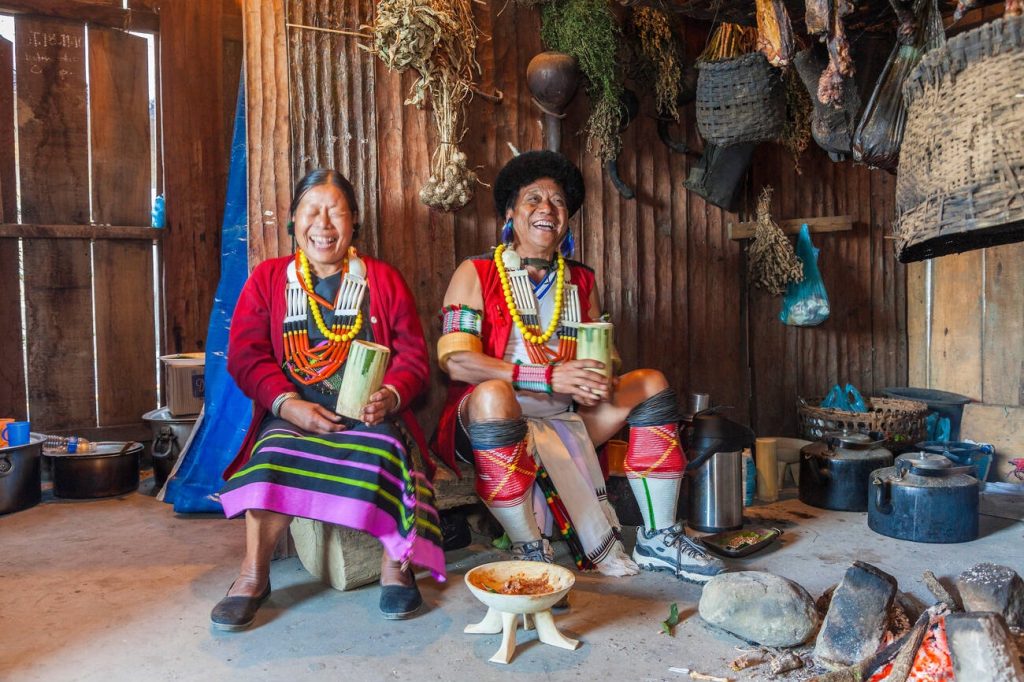A Journey Through Diversity: Exploring the Rich Tapestry of Native American Tribes
A Journey Through Diversity: Exploring the Rich Tapestry of Native American Tribes

The United States is a nation built on a foundation of diverse cultures and histories, and none are as integral to this fabric as the Native American tribes. These nations, each with their own unique traditions, languages, and stories, have inhabited this land for millennia, contributing to the rich tapestry of American identity.
This article serves as a guide to understanding the remarkable diversity of Native American tribes, exploring their unique characteristics, historical significance, and ongoing struggles. It is crucial to acknowledge that this exploration is merely a glimpse into the vast and complex world of Native American cultures.
Related Articles: A Journey Through Diversity: Exploring the Rich Tapestry of Native American Tribes
- Salmond Island’s Enchanting Cultural Tapestry
- Unveiling the Extraordinary: Today’s Featured Ute Steals the Show
- Haunting Harmonies: Unraveling the Legends of Native Death Spirits
- Unveiling the Soaring Spirit: The Raven’s Significance in Native American Totem Poles
- UnlockReserve Your Oklahoma Getaway: A Cozy Escape to Remember
The Legacy of First Nations: A Brief Historical Overview
Before European colonization, the Americas were home to a vast array of indigenous nations, each with their own distinct languages, customs, and ways of life. From the icy landscapes of the Arctic to the sun-drenched deserts of the Southwest, these tribes thrived in diverse environments, developing unique adaptations and traditions.
The arrival of European colonists in the 15th century marked a significant turning point in the history of Native Americans. The introduction of foreign diseases, the displacement of indigenous populations, and the forced assimilation policies of the United States government had a devastating impact on Native American communities.
Despite these challenges, Native American tribes have persevered, maintaining their cultural heritage and fighting for recognition and self-determination.
Navigating the Diversity: A Look at Major Tribal Affiliations
The term "Native American" encompasses a wide range of distinct tribes and nations, each with its own unique history, language, and cultural practices. To better understand this diversity, it’s helpful to categorize these tribes into broader affiliations:

Algonquian: One of the largest language families in North America, the Algonquian tribes are found throughout the eastern woodlands, the Great Plains, and parts of the Canadian Prairies. Notable Algonquian tribes include the Cherokee, the Cree, and the Ojibwe.
-
Siouan: The Siouan language family is primarily found in the Great Plains, the Midwest, and the Southeast. The Lakota, Dakota, and Nakota (often collectively referred to as the Sioux), the Osage, and the Omaha are prominent Siouan tribes.
-
Iroquoian: The Iroquoian language family is predominantly found in the Northeast, with notable tribes including the Mohawk, Oneida, Onondaga, Cayuga, and Seneca (collectively known as the Iroquois Confederacy), as well as the Cherokee.
-
Muskogean: The Muskogean language family is primarily located in the Southeast, with tribes like the Creek, Seminole, and Chickasaw.

-
Athabaskan: The Athabaskan language family is primarily found in the Northwest, Alaska, and parts of Canada. The Navajo and Apache are prominent Athabaskan tribes.
-
Salish: The Salish language family is found in the Pacific Northwest, with tribes like the Coeur d’Alene, the Kalispel, and the Pend d’Oreille.
-
Uto-Aztecan: The Uto-Aztecan language family is found in the Southwest, with tribes like the Hopi, the Zuni, and the Paiute.

Beyond Language: Exploring the Rich Tapestry of Native American Cultures
While language provides a framework for understanding tribal affiliations, it is essential to recognize that each Native American tribe possesses a unique cultural identity shaped by its specific environment, history, and traditions.
-
Art and Craftsmanship: Native American art is a vibrant expression of cultural identity, encompassing a wide range of mediums, including beadwork, pottery, basket weaving, and traditional clothing. Each tribe has its own distinctive artistic style, reflecting its cultural values and beliefs.
-
Ceremonies and Rituals: Native American tribes have elaborate ceremonies and rituals that are deeply rooted in their spiritual beliefs and traditions. These ceremonies can range from annual celebrations of harvest and renewal to healing rituals and spiritual journeys.
-
Governance and Social Structures: Native American tribes have developed complex systems of governance and social structures that reflect their unique values and priorities. Traditional governance systems often emphasize consensus-building, community responsibility, and respect for elders.
Contemporary Issues: The Ongoing Struggle for Self-Determination
Despite their resilience and cultural richness, Native American tribes continue to face challenges in the modern world. These challenges include:
-
Economic Disparities: Native American communities often face higher rates of poverty and unemployment compared to the general population. This is due in part to a history of dispossession, limited access to education and healthcare, and systemic discrimination.
-
Environmental Justice: Native American communities are disproportionately impacted by environmental hazards, such as pollution, resource extraction, and climate change. This is due to their historical and current land ownership patterns, as well as the lack of adequate environmental protections for tribal lands.
-
Sovereignty and Self-Determination: The ongoing struggle for tribal sovereignty and self-determination remains a crucial issue for Native American communities. This includes the right to govern themselves, protect their cultural heritage, and manage their own resources.
Moving Forward: A Call for Understanding and Respect
Understanding and respecting the diversity and resilience of Native American tribes is essential for building a more inclusive and equitable society. This requires:
-
Challenging Stereotypes and Misconceptions: It is crucial to move beyond harmful stereotypes and misconceptions about Native Americans, recognizing the vast diversity of their cultures and experiences.
-
Supporting Tribal Self-Determination: We must advocate for policies that support tribal sovereignty and self-determination, empowering Native American communities to govern themselves and protect their rights.
-
Learning from Native American Histories and Cultures: We can all learn from the rich history and cultural traditions of Native American tribes, gaining a deeper understanding of their resilience, wisdom, and contributions to the American story.
FAQ: A Guide to Understanding Native American Tribes
Q: How many Native American tribes are there in the United States?
A: There are currently 574 federally recognized tribes in the United States, representing a wide range of cultural and linguistic diversity.
Q: Where can I find a list of Native American tribes?
A: The Bureau of Indian Affairs (BIA) maintains a list of federally recognized tribes on its website. You can also find detailed information about individual tribes through tribal websites and resources.
Q: How can I learn more about specific Native American tribes?
A: There are many resources available for learning about specific Native American tribes, including:
- Tribal Websites: Many tribes have their own websites that provide information about their history, culture, and current activities.
- Museums and Cultural Centers: Museums and cultural centers dedicated to Native American history and culture offer valuable insights into specific tribal traditions and artifacts.
- Books and Articles: There are numerous books and articles written by Native American authors and scholars that provide detailed accounts of specific tribes and their histories.
- Educational Resources: Educational institutions often offer courses and workshops on Native American history and culture.
Q: What is the difference between a "tribe" and a "nation"?
A: The terms "tribe" and "nation" are often used interchangeably to refer to Native American groups. However, "nation" emphasizes the sovereign status of these groups, acknowledging their self-governance and distinct cultural identity.
Q: How can I support Native American communities?
A: You can support Native American communities in various ways:
- Educate Yourself: Learn about Native American history, culture, and current issues.
- Support Native American-owned businesses: Patronize Native American-owned businesses and organizations.
- Advocate for Tribal Sovereignty: Support policies that promote tribal self-determination and protect tribal rights.
- Donate to Native American organizations: Contribute to organizations that support Native American communities and address their needs.
Conclusion: A Journey of Understanding and Respect
The journey of understanding and respecting Native American tribes is a continuous one. By acknowledging their rich history, diversity, and ongoing struggles, we can build a more inclusive and equitable society that celebrates the contributions of all Americans. Let us continue to learn from their resilience, wisdom, and cultural richness, ensuring that their voices are heard and their rights are protected.

Closure
Thus, we hope this article has provided valuable insights into A Journey Through Diversity: Exploring the Rich Tapestry of Native American Tribes. We thank you for taking the time to read this article. See you in our next article!